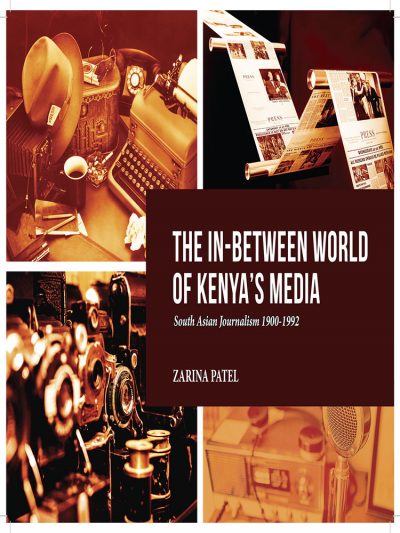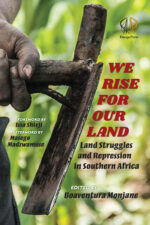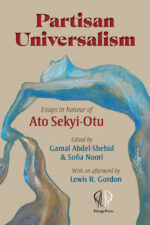Under-Education in Africa: From Colonialism to Neoliberalism is a collection of essays on diverse aspects of educational systems that were written over a period of four and a half decades, written from the point of view of an activist educator.
With the focus on Tanzania, they cover education in the German colonial era, the days of Ujamaa socialism and the present neo-liberal times. Themes include the social function of education, the impact of external dependency on education, practical versus academic education, democracy and violence in schools, the role of computers in education, the effect of privatization on higher education, misrepresentation of educational history, good and bad teaching styles, book reading, the teaching of statistics to doctors and student activism in education.
Two essays provide a comparative view of the situation in Tanzania and the USA. Linking the state of the educational system with society as a whole, they explore the possibility of progressive transformation on both fronts. They are based on the author’s experience as a long-term educator, his original research, relevant books, newspaper reports and discussions with colleagues and students.
The author is a retired professor of medical statistics who has taught at colleges and universities in Tanzania and at universities in the USA and Norway.
Table of Contents:
– Abbreviations
– Preface
– Introduction
– Education and Colonialism
– Education and Ujamaa
– Education and Democracy
– Education and Dependency
– Education and Violence
– Education and Privatization
– Education and Computers
– Education and America
– Education and Debate
– Education and History – I
– Education and History – II
– Education and Reading
– Education and Educators
– Education and Activism – I
– Education and Activism – II
– Education and Liberation
– References
– Author Profile
A collection of essays from an educator-activist that takes us back to one of the richest periods of African intellectual debate about knowledge and colonization, the early 1970s at the University of Dar es Salaam, with valuable lessons for today.
– Budd L Hall, PhD, Professor Emeritus, UNESCO Co-chair in Community‑Based Research and Social Responsibility in Higher Education, University of Victoria, Canada
This is a timely, broad ranging, provocative series of essays about under-education in Africa. The author’s lived experiences, particularly in Tanzania, form a rich base for much of the critical contextual analysis. New generations of scholar-activists in Africa and elsewhere are urged to learn from history, to debate, to question and strive, with passion and hope, to attain a just, more egalitarian world.
– Shirley Walters, Professor Emerita, University of Western Cape, South Africa
An inspiring collection of vivid stories and profound critiques of education from a committed scholar-activist who draws upon a lifetime of engaged learning, teaching, research and debate. Revealing how under-education has been spawned by global capitalism, it also inspires hope and offers strategies for educational and social change in Africa and beyond.
– Pat Saul, UDSM graduate, teacher and community activist for social change, Toronto
A dedicated and passionate educator and scholar activist, Karim Hirji explores the connection between education and a dependent economy, and the systematic de-education of the Tanzanian and African masses during the colonial and post-colonial periods up to the present day. Broad structural analysis of underlying factors such as social and economic injustice, political accountability and neoliberal policy is combined with concrete investigation of the challenges facing students and teachers at all levels of the education system and ends on a positive note, “dare to dream.”
– Marjorie Mbilinyi, Professor of Education, University of Dar es Salaam (1968-2003), independent researcher and writer
Karim Hirji’s erudite yet accessible collection of essays is bound to become an essential companion and a classic for all concerned with the underdevelopment of Africa and its educational doppelganger, under-education. His dialectical, fine-grained and multi-scalar analysis of educational issues traverses the period of colonialism, the first flush of independence through neo-colonialism to present day capitalist neoliberalism. It is a milestone in connecting past and present struggles through the tools of political economy. While the essays focus on Tanzania, they have continental resonance and remain globally relevant.
The essays draw inspiration and critical lessons from many countries. Hirji’s education commentary is grounded in a dedicated praxis of over forty years. The collection reflects this breadth of experience and the depth of multifaceted struggles. It embraces many pertinent issues valuable for contemporaneous endeavours against miseducation as these relate to democracy, dependency, violence in schools, the privatisation and corporatisation of education, the uses and abuses of technology, cultural imperialism, academic dissent, publishing, reading and the qualities of an effective teacher.
Written in a register that exudes deep honesty, wisdom, self-critical reflection and borne out of collective struggle, the essays are indispensable to confront the current obfuscations, falsifications and the dominant right wing and indeed neo-fascist assaults on meaningful education and reason. The ideas and practices of Hirji and his fellow activist scholars such as Shivji, and the much missed AM Babu and Walter Rodney remain germane today and will leave a solid legacy for future generations to build on.
Despite these bleak, dire and precarious times, this remarkable collection is an antidote to despair. Hirji’s injunction, not to lose hope is also a clarion call to action and a firm belief that, to quote Hirji, “…the struggle is a long term one; there are bound to be ups and downs. But ultimately, Africa and its people will triumph.”
– Salim Vally, Professor and Director, Centre for Education Rights and Transformation, University of Johannesburg, South Africa
“This book will be of interest to readers in search of critical perspectives on education in Tanzania and Africa more widely. It invites the policymakers, teachers and students of today to erase their ‘ideological blinders’. For fellow citizens and observers of Tanzania, it elucidates the ideology of ‘education for self-reliance’ in practice. And, as an authoritative text on under-education, it makes an important contribution to the debates on transformative education and knowledge production in Africa as a whole.” Ahmad Kipacha Senior Lecturer in the School of Business Studies and Humanities at the Nelson Mandela African Institution of Science and Technology in Arusha.
https://www.tzaffairs.org/2021/01/reviews-89/










